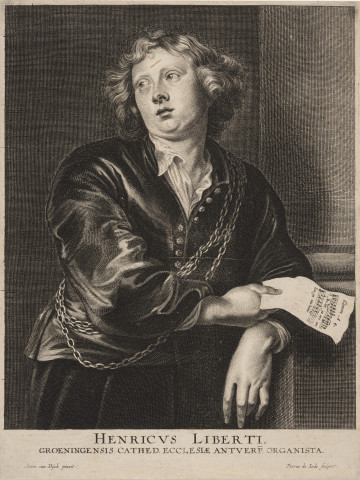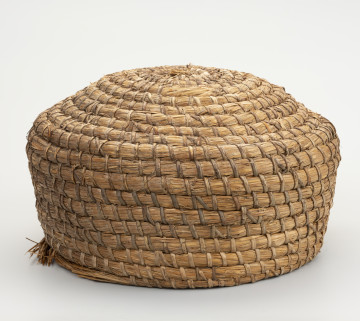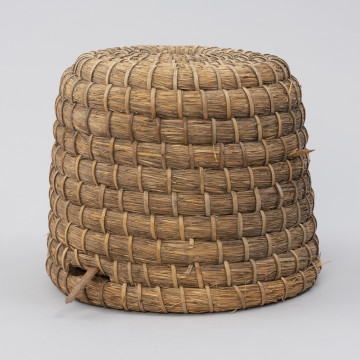
Portrait
circa 1632
National Museum in Szczecin
Part of the collection: Orient
Thurible from the end of the 19th century, out of finely finished bronze, at spots – patinated, with cover on three legs shaped like elephant legs, supporting themselves on trumpets. The item has a complex design and is finely made. The body in the lower part of the unit is covered with a decoration made up of stylised, etched waves on which there are four mythical animals called the qilin and two Fo dogs as reliefs. Above the body, there are t’aotie antiquitating mask motives against the backdrop of a meander pattern. The sides of the body carry two grips in the form of dragons with serpentine bodies. The cover is convex, open work, decorated with cut, stylised clouds, topped with a figure of the god of longevity, Shou-Lao, sitting atop a deer at rest. The deity holds in its one hand a peach, in the other – a staff. The thurible is set upon a wooden, black, open work base decorated geometrically. On the top there are oval indentations for the legs of the thurible. The wood is sculpted and painted. Tāotiè is the name of a mythological monster and motif characteristic for Chinese bronze vessels from the Shang and Zhou periods. The thurible is a device meant to burn incense or perfume in solid form. These containers varied greatly in terms of size, form and construction material. They were typically practical in both lay as well as sacred terms from antiquity, and have been used in many cultures. They were used to cleanse the air of „pathogens” in case of epidemiological hazards, to perfume rooms or even to measure time for rituals and ceremonies – the progress of burning of conical incense was measured. The incense is burned by being placed directly on the heat source or a hot metal plate in the thurible. Small, concave pieces of charcoal briquet were sold for home-use thuribles. One would set the corner of a briquet alight and then place it in the thurible and put out the flame. After the sparks made their way through the entire briquet, it was ready for incense to be placed upon it.
Object type
Orient
Owner
Castle Museum in Łańcut
Identification number
Location / status

circa 1632
National Museum in Szczecin

1965
National Museum in Szczecin

1890 — 1910
National Museum in Szczecin
DISCOVER this TOPIC
National Museum in Szczecin
DISCOVER this PATH
Educational path